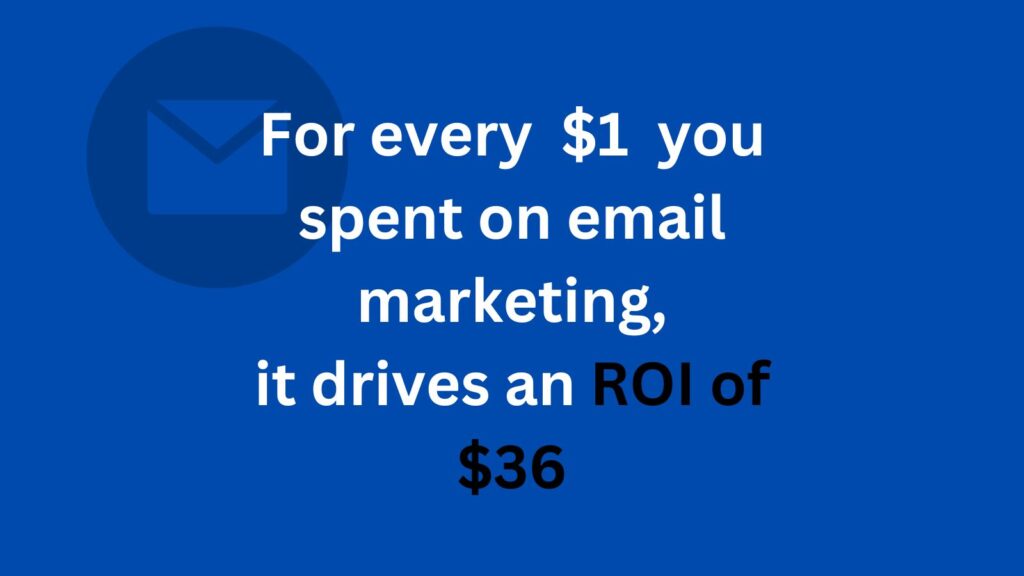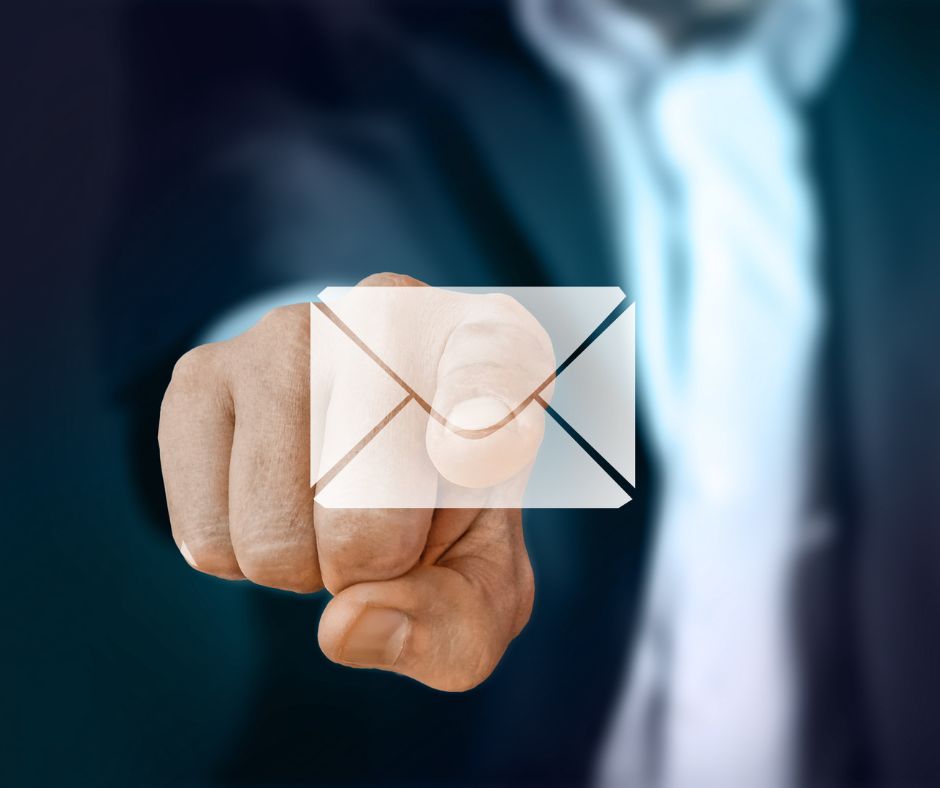“Email has an ability many channels don’t: creating valuable, personal touches – at scale.”
David Newman
E-commerce businesses and email? They’re like two peas in a pod! Businesses use email to send messages that feel like they’re just for you, even though they’re reaching thousands of people at once. So, when it comes to making connections and keeping customers happy and coming back, email is a real game-changer. It’s like having a personal chat with each customer but on a super-sized scale!
In the ever-evolving digital landscape, harnessing the power of email marketing can provide an unprecedented boost to your e-commerce business. This marketing strategy, when used effectively, can enhance your customer base, boost sales, and solidify your brand’s online presence.
IMPORTANCE OF EMAIL MARKETING
Email marketing is a digital strategy where businesses send emails to potential or existing customers. It’s used for promoting products, sharing information, and building customer relationships to boost sales. It’s all about keeping your business in the customer’s mind.
Email marketing is not just a business strategy; it’s an imperative tool for e-commerce businesses. With an average ROI of $36 for every $1 spent, email marketing offers a potential that is hard to ignore. It builds a bridge of direct communication between businesses and their customers, providing opportunities for customer retention, personalized messaging, and sales promotions.

FUNDAMENTALS OF EMAIL MARKETING
Permission-based Marketing
To start with, it’s essential to understand that email marketing is permission-based. This means you communicate with people who have explicitly opted in to receive emails from you. It ensures respect for user privacy and significantly improves engagement rates.
Permission-based email marketing involves getting explicit consent from people before you send them marketing emails. Here’s a straightforward way to do it:
- Sign-up Form: Include a clear sign-up form on your website, blog, or social media. Explain what type of content they’ll receive and how often.
- Double Opt-In: After someone fills out the form, send them a confirmation email. They need to click a link to confirm their subscription. This ensures that the email owner has consented to receive your emails.
- Transparency: Be clear about your intentions. Let people know they’re signing up for marketing emails.
- Unsubscribe: Always include an easy-to-find unsubscribe button in your emails. People should be able to stop receiving your emails whenever they want.
- Respect Privacy: Follow all relevant data protection and privacy laws. Don’t share or sell your email list.
The Importance of Subject Lines
Your email’s subject line is your first point of contact with your audience. An engaging and creative subject line can drastically improve your open rates. It should intrigue the reader enough to open the email, without resorting to clickbait.
Personalization
Customers appreciate personalized experiences. By addressing your customers by their names, referencing their past purchases, or recommending products based on their interests, you can significantly improve your engagement rates.
Emails that are personalized have been demonstrated to boost the click rate by 139% compared to those sent statically just once.

Call to Action
Every email should have a clear and concise Call to Action (CTA). It guides your reader on what to do next – whether it’s visiting your website, checking out a new product, or availing of a discount.
Segmentation
Segmenting your audience based on their preferences, past purchases, location, etc., allows you to send more targeted and relevant emails.
Here’s a simple guide on how to do it:
- Collect Data: Gather as much information about your subscribers as possible. This could be through signup forms, surveys, or tracking subscriber behavior.
- Identify Segments: Common ways to segment your list include demographic data (age, gender, location), behavior (purchase history, email engagement), and stage in the customer journey (new subscribers, loyal customers).
- Create Targeted Content: Tailor your emails to suit each segment. For example, offer product recommendations based on previous purchases, or send re-engagement emails to subscribers who haven’t interacted with your emails in a while.
- Test and Analyze: Monitor your results to see how your segmented emails are performing compared to your general ones. Adjust your segmentation strategy as needed.
- Update Segments: People’s behaviors and preferences change over time, so keep your segments updated. Re-evaluate your segments regularly to ensure they’re still relevant.
Remember, the goal of segmentation is to send more relevant emails, which can lead to higher open and click-through rates, and ultimately, more conversions.
Timing of Emails
Understanding when your audience is most likely to check their emails can drastically improve your open rates. Timing in email marketing is about choosing the right day and time to send your emails, typically during work hours and mid-week, to maximize open rates. However, optimal timing can vary, so it’s important to understand your audience’s behavior, use email marketing tools for insights, and continuously test and adjust your timing strategies. Balancing frequency to avoid overwhelming or losing touch with your subscribers is also key.
IMPLEMENTING EMAIL MARKETING
Choosing the Right Platform
Choosing an email marketing platform should take into consideration factors such as features, deliverability, cost, usability, customer support, and scalability. You should seek a platform offering a comprehensive suite of features like email design, list management, automation, analytics, and integrations with other tools. Ensure that the platform has a good reputation for email deliverability and fits within your budget. It should be user-friendly, offer responsive customer support, and scale your growing business. Popular platforms to consider include MailChimp, SendinBlue, Constant Contact, GetResponse, and ConvertKit.
Email Design and Mobile Optimization
A well-designed email, that is also optimized for mobile viewing, can significantly increase engagement. With the majority of people accessing their emails from mobile devices, mobile optimization is crucial.
Building Email Lists
An email list is your most valuable asset in email marketing. Building an email list for marketing involves using opt-in forms on your website, offering valuable content, and leveraging social media, contests, and referral programs. You can also collect email addresses in person during events, ensuring you have permission to use them. Prioritize creating an engaged list over a large, disinterested one and always respect privacy regulations.
Metrics to Track
Understanding your email marketing performance is vital for improvement. Track metrics like open rates, click-through rates (CTR), bounce rates, and conversion rates to understand what works and what doesn’t.
ADVANCED EMAIL MARKETING STRATEGIES
Abandoned Cart Emails
One of the most effective strategies in e-commerce email marketing is sending abandoned cart emails. These are reminders sent to customers who added items to their cart but didn’t complete the purchase.
Abandoned cart reminders should be sent promptly and personalized, offering clear instructions on how to complete the purchase. Providing assistance or incentives like discounts can prompt customers to finalize their orders. Lastly, it’s crucial to constantly test different strategies, optimize based on results, and comply with relevant email marketing laws.
Personalized Recommendations
By leveraging user data, you can send personalized product recommendations to your customers. These could be items that complement their previous purchases, or new arrivals in their favorite categories.
According to a report by SmarterHQ, 72% of consumers in 2019 only engaged with marketing messages that were customized to their specific interests. Moreover, personalized email campaigns have been shown to deliver 6x higher transaction rates, according to Experian.
Retargeting Emails
Retargeting emails are aimed at customers who have interacted with your brand but haven’t made a purchase. With enticing offers and personalized messages, you can persuade these potential customers to make a purchase.
CONCLUSION
Effective email marketing can truly transform your e-commerce business. By implementing the above strategies, you can build strong relationships with your customers, enhance your brand reputation, and ultimately, drive sales. Email marketing is no longer optional; it’s a crucial component of successful e-commerce operations.
FAQs
1. What is the importance of personalization in email marketing?
Personalization in email marketing involves tailoring your emails to meet the individual interests and preferences of each recipient. It can significantly increase engagement rates and build stronger relationships with your customers.
2. How does email segmentation benefit my e-commerce business?
Segmentation allows you to categorize your customers based on their behavior, preferences, or other relevant criteria. It helps you send more targeted and relevant emails, resulting in better engagement and higher conversion rates.
3. What is the significance of mobile optimization in email marketing?
With most people accessing their emails on mobile devices, it’s essential that your emails are designed to be easily readable and interacted with on a small screen. Mobile optimization can significantly improve your email engagement rates.
4. What are abandoned cart emails and why are they important?
Abandoned cart emails are reminders sent to customers who added items to their cart but didn’t complete the purchase. They are critical because they can persuade customers to return and complete their purchases, thereby directly contributing to your sales.
5. How can I build an effective email list for my e-commerce business?
You can build an email list by encouraging visitors to your website or social media pages to subscribe to your emails. Offering a first-time discount, exclusive content, or a free resource in exchange for their email address can be effective tactics.
